
1976년 5월, 레바논 정부는 국내에서 종교 내전이 점점 수습하기 어려운 상황으로 치닫게 되자 역사적, 문화적으로 가까운 시리아에 개입을 요청했다. 시리아는 무슬림이 절대 다수 국가이긴 하지만 기독교도들도 적지 않게 분포한 중동 제2의 기독교 국가이고 다른 이슬람 국가에 비해서는 기독교에 매우 친화적이라 종교 자유국가이기도 하다. 레바논 정부의 요청을 받은 시리아의 하페즈 알 아사드(Ḥāfiẓ al-ʾAsad) 대통령은 마론주의 기독교도들을 지원하고 급진적인 팔레스타인 해방기구(PLO) 및 드루이즈를 제압하는 것에 협력하기로 하고 레바논에 시리아 군을 파견했다. 1976년 9월 마론주의 기독교도들 중 이러한 시리아의 행위에 대해 내정간섭으로 규정하고 크게 반발했다. 이들 마론주의자들은 반(反) 시리아, 반(反) 팔레스타인을 골자로 레바논 군단(LF)이라는 민병대를 결성하면서 시리아와 맞섰다. 따라서 시리아 군과 LF는 산발적으로 충돌했고 PLO나 드루이즈파도 서로 간의 전투를 펼쳤다. 정규군인 시리아 군에 비해 열세에 놓인 LF는 자신들을 지원해 줄 수 있는 세력을 찾게 되는데 이 때 LF에서 손을 내민 것이 이스라엘이었다.
이스라엘은 LF를 적극적으로 지원하면서 레바논 내 이슬람 세력과 내전을 벌이도록 부추기면서 레바논 내의 이슬람 세력들 상호 간에 이용하고 분열시켜 레바논 내 이교도들의 무력을 약화시키려는 전략을 세웠다. 한편 시리아는 레바논 내전에 개입하기 전에 이스라엘과 비공개로 ‘레드라인’ 협정을 체결했다. 해당 레드라인 협정 내용에 의하면 베이루트 이남 지역에 여단 규모를 상회하는 시리아의 주력 부대들을 주둔시키지 않으며 레바논 내에서 이스라엘 영토를 향해 공격할 수 있는 시리아 군의 장거리포, 미사일, 로켓탄을 배치하지 않는다는 것, 그리고 전투기나 폭격기는 일절 레바논 국내에 주둔시키지 않는다는 것이 비공개 협정의 내용이었다. LF는 이 협정을 역이용하여 시리아 군을 상대로 도발을 감행해 마론주의자들의 거점인 동베이루트에 시리아 군이 포격을 가해 레드라인을 넘도록 유도했다. 이스라엘은 시리아의 협정 위반을 노리며 시리아를 비난해 특수부대와 공군기를 먼저 출동시켰고 리타니 강 이남의 레바논 남부를 점령했다.
그러나 시리아 군은 레드라인을 넘지 않았음에도 불구하고 선제공격하여 레드라인을 넘게 유도하는 LF에 반격을 가한 것이 이스라엘의 입장의 레드라인을 넘었다는 구실을 만든 셈이 되었다. 결국 이스라엘은 대리전을 치르다가 시리아 군의 반격에 대한 구실로 직접 참전해 전면전을 나서게 된 것이다. 이는 선제 공격으로 먼저 레드라인을 넘었다는 국제적인 비난을 피하기 위해 레바논 군 장교였던 사드 하다트(Saad Haddad)에게 리타니 강 이남의 점령지를 양도했다. 하다트는 리타니 강 남부 지역에 자신의 군대를 주둔시키고 스스로 자유 레바논군이라는 이름을 붙여 이스라엘에 협력했다. 1979년 이후 이들은 자유 레바논군이라는 이름에서 남부 레바논 군(South Lebanon Army, SLA)으로 알려졌고 SLA의 활동은 거의 레바논 최남단에만 국한되었다. 1980년에는 레바논 각지에서 시리아 군과 LF가 충돌하였으며 LF는 베이루트와 베카 고원을 연결하는 군사 도로를 건설하면서 시리아 군의 배후를 차단하려 했다. 이에 시리아 군은 LF에 공격을 가하자 그에 대한 보복으로 이스라엘 전투기가 시리아 헬기를 격추시켰다.
그러자 시리아도 그에 대한 맞대응으로 지대공 미사일을 베카 고원에 전진 배치하는 등 군사 행동에 나섰다. 이로써 베이루트 이북은 시리아가 장악하고 베이루트 이남은 이스라엘이 장악하는 것으로 조인한 '레드라인' 협정은 폐기되었다. 이 때부터는 전쟁터만 레바논 땅이었지 사실상 이스라엘과 시리아의 전쟁이나 마찬가지였다. 시리아와 레바논 이 외의 다른 아랍 국가들은 참전하지 않았고 PLO는 당시에 독립을 인정 받지 않은 국가로써 무장단체로 여겨졌지 국가는 아니었기 때문에 사실상 이스라엘-시리아의 전면전이 되었던 것이다. 1982년 6월 6일, 영국 주재 이스라엘 대사에 대한 테러가 발생했다. 실제로 이 암살 미수 사건의 주체는 PLO에 적대적인 팔레스타인 급진 무장 조직인 아부니달(Abunidal)이었지만 이스라엘은 그 사실을 알고 있으면서도 PLO를 이 사건의 주범으로 비난하면서 이를 전쟁의 명분으로 삼았다. 이에 대한 보복을 명분으로 이스라엘은 ‘갈릴리 평화(Operation Peace for Galilee)’ 작전을 개시한다. 후일 이스라엘의 수상이 된 아리엘 샤론(Ariel Sharon) 국방 장관이 이 레바논 침공을 지휘했다.
레바논 남부 지방은 PLO의 거점으로 PLO가 상당수의 팔레스타인 난민과 반이스라엘 성향이 강한 레바논 주민들의 적극적인 지지를 받으면서 대이스라엘 투쟁을 해 오던 거점 지역이었다 이스라엘의 전략적 목표는 팔레스타인 대이스라엘 투쟁의 전략사령부에 해당하는 PLO를 레바논에서 축출하여 와해시키는 것이었다. 이스라엘 군은 약 60,000~78,000의 병력을 이스하크 모르드카이(Ishaq Mordekai) 소장의 서부군을 지중해 방면을 보내 북상하게 했고 아미르 드로리(Amir Drori) 중장의 중부군은 레바논 산지 서쪽 능선에 오르게 했으며, 아비그도르 벤갈(Avigdor Bengal) 소장의 동부군은 베카 계곡과 헤르몬 산지로 파견해 시리아 군의 추가 지원을 방어하면서 진격하는 등, 총 세 방향으로 레바논 영내에 진입하면서 침공이 개시되었다. 1982년 6월 6일, 이스라엘 군은 PLO가 장악한 보포르 성채(Beaufort Castle)에 골라니 여단 소속 2개 중대를 투입하여 갈고리를 이용해 암벽을 올라 성을 공격했고 PLO가 격렬히 저항했으나 백병전 끝에 요새가 함락당했다.
6월 7일 이스라엘 군은 공격을 재개해 티레를 고립시켰으며 북쪽의 시돈에 함포 사격을 가하면서 특수부대를 상륙시키고 레바논 남부의 유엔 레바논 임시군 주둔 지역을 돌파했다. 이스라엘 군은 각 거점을 우회하면서 빠르게 레바논으로 진격했지만 야간이 되자 군의 정돈을 위해 잠시 후퇴했다. 6월 8일, 이스라엘 군은 점차 PLO가 아니라 시리아 군과 전쟁을 치르게 되었다. 이스라엘 중부군의 선두 기동부대는 후속부대가 거점을 점령하도록 하고 베이루트를 향해 진격했다. 해안에서는 오전에 공중전이 벌어져 이스라엘 공군기가 시리아의 MiG 2기를 격추시켰다. 그로 인해 티레가 함락되고 시돈이 포위되면서 베이루트 진입로에 장애물을 제거해 진격을 용이하게 했다. 그리고 6월 9일에는 이스라엘 군이 베카 고원의 입구를 장악하면서 시리아의 베이루트 주둔군이 포위될 위기에 처했다. 레바논에서 주둔군이 궤멸될 것을 우려한 하페즈 알 아사드 대통령은 시리아 군의 지대공 미사일(SAM) 망을 베카 고원으로 전진 배치하도록 지시했다. 그러나 시리아 공군은 베카 계곡에서 이스라엘에 참패했다.
제공권을 장악한 해안의 이스라엘군은 베이루트를 불과 10km 남겨둔 지점까지 전진했지만 중부군과 합류를 위해 대기에 들어갔다. 한편 중부군은 다마스쿠스-베이루트 고속도로를 점령해 나갔으나 시리아군과 전차전에서 고전을 면치 못했었다. 결국 후방의 이스라엘 군 포병들이 지원포격을 실시하면서 상황이 역전되었고 6시간이 넘는 전차전 끝에 이스라엘은 베카-제닌을 잇는 도로를 완전히 장악했다. 이스라엘군은 갈릴리 평화 작전을 통틀어 전차 140대를 상실했으며 시리아군은 334대의 전차를 잃고 완패한 전투였다. 결국 패전한 시리아군은 결국 11일 정오 휴전에 합의했다. 이스라엘 군은 레바논 남부 4,500㎦를 점령했지만 이스라엘의 침공에 전 세계의 비난이 몰리게 되었으며 PLO의 반격으로 많은 민간인 희생자를 낸 이스라엘은 베이루트에서 시가전을 시도하는 것에 부담을 느꼈다. 이스라엘은 베이루트를 포위한 채 직접적인 시가전을 하는 것보다 확성기를 이용해 항복을 권고하는 전술로 돌아섰다. 그러자 PLO는 이스라엘 공군의 정밀폭격에 맞서 민간인을 지붕에 올려 놓는 방법으로 응수했다.
PLO 지도자 야세르 아라파트는 결사 항전을 외쳤다. 그러나 시리아가 패배하고 물러선 마당에 레바논에는 이미 PLO를 도와줄 수 있는 아군은 없는 상태였다. 레바논 최대의 파벌인 이슬람 시아파는 PLO를 공격하는 이스라엘에 방관만했고 마론주의 기독교 민병대는 적극적으로 이스라엘에 협력했다. PLO는 12살 소년병에게까지 RPG-7을 쥐어주면서 저항했지만 아랍권은 이스라엘에 대해 비난 성명을 발표했을 뿐 그 어느 나라도 군사 행동에 나서지 않았다. 베이루트를 포위한 이스라엘군은 보병과 포병을 투입해서 시가전을 시작했다. PLO는 항복을 거부하면서 시가전을 벌이며 저항했지만 외부 세력의 지원을 기대할 수 없는 상황에서 버티는 것에는 한계가 있었다. 베이루트 시가 계속 파괴되는 것을 우려한 레바논 이슬람 세력의 수장이 아라파트를 만나 PLO에게 명예로운 후퇴를 요구했고 PLO는 결국 베이루트에서 퇴각할 수밖에 없었다.
이렇게 레바논 내전은 시리아와 PLO의 참혹한 패배로 종결되었다. 이스라엘은 미국의 중재에도 불구하고 무력을 가진 PLO의 레바논 철수를 관철시키면서까지 PLO가 염려한 민간인 학살에 대한 예방 조항을 결국 문서로 보장하지 않았다. 이스라엘은 팔레스타인 난민에 대한 안전보장을 요구한 미국 측에게 구두로 난민들에 대한 공격이 없을 것이라며 보장을 하였다. 그러나 이와 같이 구두로 한 약속이 지켜질리 만무했다. 이스라엘은 미국과 협의를 거쳐 1985년 2월 레바논에서 철수했으나 남부 레바논 지역에는 PLO 게릴라들의 공격에 대비한다는 명분으로 2000년까지 일부 병력을 잔류시키고 있었다. 이스라엘과 레바논의 국경을 넘어 리타니 강과 접하는 지역을 이스라엘 군은 남부 레바논군과 함께 지배하였고 샤브라사틸라 대학살이라는 최악의 인권유린 사건이 발생하게 된다. lukybaby7@gmail.com
*필자/ 정길선.
노바토포스 회원, 역사학자, 고고인류학자, 칼럼니스트, 러시아 과학아카데미 유라시아 고고인류학연구소 연구교수.
*아래는 위 기사를 '구글 번역'으로 번역한 영문 기사의 [전문]입니다. '구글번역'은 이해도 높이기를 위해 노력하고 있습니다. 영문 번역에 오류가 있을 수 있음을 전제로 합니다.<*The following is [the full text] of the English article translated by 'Google Translate'. 'Google Translate' is working hard to improve understanding. It is assumed that there may be errors in the English translation.>
The Lebanese Civil War: From Proxy War to All-Out War between Syria and Israel
- Columnist Gil-seon Jeong
In May 1976, as the religious civil war within the country became increasingly difficult to control, the Lebanese government requested intervention from Syria, which was historically and culturally close to it. Syria is the second largest Christian country in the Middle East, although it is a Muslim-majority country, and it is also very friendly to Christianity compared to other Islamic countries, making it a country with religious freedom. At the request of the Lebanese government, Syrian President Hafez al-Assad agreed to support Maronite Christians and cooperate in suppressing the radical Palestine Liberation Organization (PLO) and Druids, and dispatched Syrian troops to Lebanon. In September 1976, Maronite Christians strongly opposed this Syrian action, calling it interference in internal affairs. These Maronites formed a militia called the Lebanese Legion (LF) with anti-Syria and anti-Palestine ideology and confronted Syria. As a result, the Syrian army and the LF clashed sporadically, and the PLO and the Druids also fought each other. The LF, which was inferior to the regular Syrian army, looked for a force that could support them, and at this time, the LF reached out to Israel. Israel actively supported the LF and incited a civil war with the Islamic forces in Lebanon, and developed a strategy to weaken the power of the infidels in Lebanon by using and dividing the Islamic forces in Lebanon. Meanwhile, Syria signed a secret ‘red line’ agreement with Israel before intervening in the Lebanese civil war. According to the contents of the Red Line Agreement, the secret agreement stated that Syria's main force exceeding the size of a brigade would not be stationed in the area south of Beirut, that the Syrian army would not deploy long-range guns, missiles, or rockets capable of attacking Israeli territory within Lebanon, and that no fighters or bombers would be stationed within Lebanon. The LF took advantage of this agreement to provoke the Syrian army, shelling East Beirut, a stronghold of the Maronites, and inducing them to cross the Red Line. Israel, targeting Syria's violation of the agreement, criticized Syria, dispatched special forces and air force aircraft first, and occupied southern Lebanon south of the Litani River. However, the Syrian army launched a preemptive strike despite not having crossed the Red Line, counterattacking the LF, which was trying to induce them to cross the Red Line, which gave Israel an excuse to cross the Red Line. Eventually, Israel fought a proxy war and then directly intervened in the Syrian counterattack, using it as an excuse to launch an all-out war. In order to avoid international criticism for crossing the red line with a preemptive strike, it ceded the occupied territories south of the Litani River to Saad Haddad, a Lebanese army officer. Haddad stationed his forces in the area south of the Litani River and called himself the Free Lebanon Army, cooperating with Israel. After 1979, the Free Lebanon Army became known as the South Lebanon Army (SLA), and the SLA’s activities were almost exclusively confined to the southernmost part of Lebanon. In 1980, the Syrian army and the LF clashed throughout Lebanon, and the LF attempted to block the Syrian army’s rear by building a military road connecting Beirut and the Bekaa Plateau. In response, the Syrian army attacked the LF, and in retaliation, Israeli fighter jets shot down a Syrian helicopter. In response, Syria also took military action, such as deploying surface-to-air missiles to the Bekaa Plateau. As a result, the "Red Line" agreement, which stipulated that Syria would control the area north of Beirut and Israel would control the area south of Beirut, was abolished. From this point on, the battlefield was only in Lebanese territory, but it was effectively a war between Israel and Syria. Other Arab countries besides Syria and Lebanon did not participate, and the PLO was considered an armed group rather than a state, as its independence was not recognized at the time. In fact, it became an all-out war between Israel and Syria. On June 6, 1982, a terrorist attack occurred against the Israeli ambassador to the UK. In fact, the perpetrator of this assassination attempt was Abunidal, a Palestinian radical armed organization hostile to the PLO, but Israel knew this fact, but blamed the PLO as the main culprit and used it as a pretext for war. In retaliation, Israel launched Operation Peace for Galilee. Ariel Sharon, who later became Prime Minister of Israel, commanded this invasion of Lebanon.
The southern region of Lebanon was a stronghold of the PLO, where the PLO had been fighting against Israel with the active support of a significant number of Palestinian refugees and Lebanese residents with strong anti-Israeli tendencies. Israel's strategic goal was to expel and disintegrate the PLO, which was the strategic command center for the Palestinian struggle against Israel. The Israeli army began the invasion by sending the Western Army under Major General Ishaq Mordekai, which had about 60,000 to 78,000 troops, northward toward the Mediterranean, the Central Army under Lieutenant General Amir Drori up the western ridge of the Lebanese Mountains, and the Eastern Army under Major General Avigdor Bengal to advance while defending against additional Syrian reinforcements in the Bekaa Valley and the Hermon Mountains, entering Lebanon from three directions. On June 6, 1982, the Israeli army deployed two companies of the Golani Brigade to the Beaufort Castle, which was under PLO control, and used grappling hooks to climb the cliffs and attack the castle. Despite fierce resistance from the PLO, the fortress fell after close combat. On June 7, the Israelis resumed their offensive, isolating Tyre, firing at Sidon in the north, landing special forces, and breaking through the UN Interim Force in Lebanon in southern Lebanon. The Israelis advanced quickly into Lebanon, bypassing each stronghold, but withdrew briefly at night to reorganize their forces. On June 8, the Israelis increasingly found themselves fighting the Syrians rather than the PLO. The lead mobile units of the Israeli Central Forces advanced toward Beirut, leaving the follow-up units to take the strongholds. An air battle ensued on the coast in the morning, during which Israeli aircraft shot down two Syrian MiGs. This led to the fall of Tyre and the encirclement of Sidon, clearing obstacles on the way to Beirut and making the advance easier. Then on June 9, the Israelis seized the entrance to the Bekaa Plateau, putting the Syrian garrison in Beirut in danger of being surrounded. President Hafez al-Assad, fearing that his forces in Lebanon would be annihilated, ordered the Syrian army's surface-to-air missile (SAM) network to be deployed forward to the Bekaa Plateau. However, the Syrian Air Force suffered a crushing defeat in the Bekaa Valley.
The coastal Israeli forces, which had gained air supremacy, advanced to a point just 10 km from Beirut, but were put on standby to join the central forces. Meanwhile, the central forces occupied the Damascus-Beirut highway, but were struggling in a tank battle with the Syrian army. Eventually, the situation was reversed when Israeli artillerymen in the rear provided support fire, and after a six-hour tank battle, Israel completely took control of the road connecting Bekaa and Jenin. The Israeli army lost 140 tanks during the entire Galilee Peace Operation, while the Syrians lost 334 tanks, a complete defeat. In the end, the defeated Syrians agreed to a ceasefire at noon on the 11th. The Israeli army occupied 4,500 square kilometers of southern Lebanon, but the Israeli invasion drew worldwide criticism, and Israel, which suffered many civilian casualties from the PLO's counterattack, felt burdened by the idea of engaging in street fighting in Beirut. Israel, which surrounded Beirut and fought directly in street fighting, switched to using loudspeakers to urge surrender. The PLO responded by placing civilians on rooftops in the face of precision bombing by the Israeli Air Force. PLO leader Yasser Arafat called for a desperate fight. However, with Syria defeated and retreating, there were no allies in Lebanon who could help the PLO. The largest Shiite Muslim faction in Lebanon simply stood by and watched Israel attack the PLO, while the Maronite Christian militia actively cooperated with Israel. The PLO resisted by giving RPG-7s to 12-year-old boy soldiers, but no Arab country took military action, only issuing statements condemning Israel. The Israeli army, which surrounded Beirut, began street fighting by deploying infantry and artillery. The PLO refused to surrender and resisted by fighting street battles, but there was a limit to how long it could endure without any support from external forces. Concerned that Beirut was being destroyed further, the head of the Lebanese Islamic forces met with Arafat and demanded an honorable retreat from the PLO, and the PLO eventually had no choice but to retreat from Beirut.
In this way, the Lebanese civil war ended with the disastrous defeat of Syria and the PLO. Despite the mediation of the United States, Israel forced the PLO to withdraw from Lebanon with force, but ultimately did not guarantee in writing the provisions for preventing the massacre of civilians that the PLO was concerned about. Israel verbally assured the United States, which demanded security guarantees for Palestinian refugees, that there would be no attacks on the refugees. However, such verbal promises were unlikely to be kept. Israel withdrew from Lebanon in February 1985 after consultation with the United States, but some troops remained in southern Lebanon until 2000 under the pretext of preparing for attacks by PLO guerrillas. The Israeli army, together with the southern Lebanese army, controlled the area bordering the Litani River across the border between Israel and Lebanon, and the worst human rights violation incident, the Shabrasatilla Massacre, occurred. lukybaby7@gmail.com
*Author/ Gil-seon Jeong.
Novatopos member, historian, paleoanthropologist, columnist, research professor at the Institute of Eurasian Paleoanthropology, Russian Academy of Sciences.
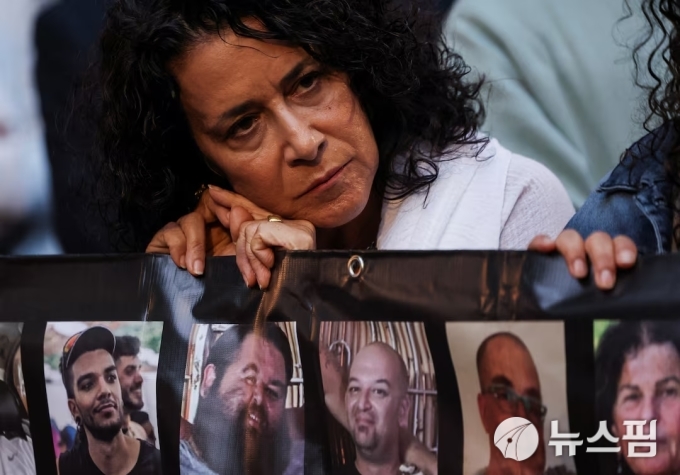
![[기자의 눈] 권력 다툼이 부른 중동의 비극](https://newsimg.sedaily.com/2024/10/07/2DFH7AD0ED_1.jpg)
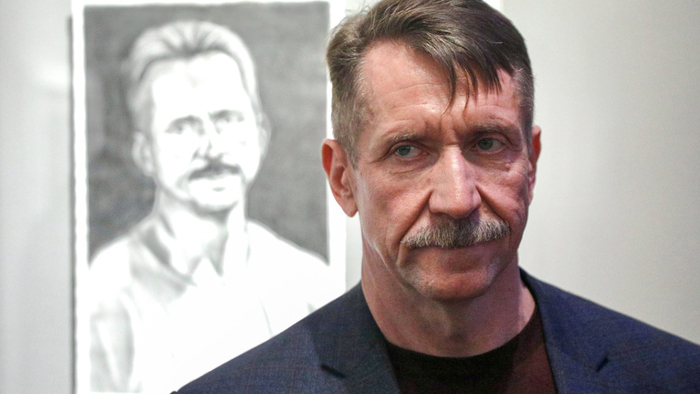
![[금/유가] 헤즈볼라 휴전 의향에 유가 4% 급락...금은 1% 넘게 하락](https://img.newspim.com/news/2022/05/28/2205280218051290_w.jpg)
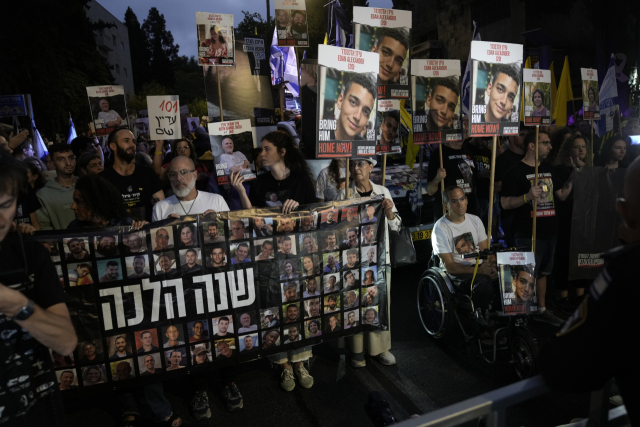
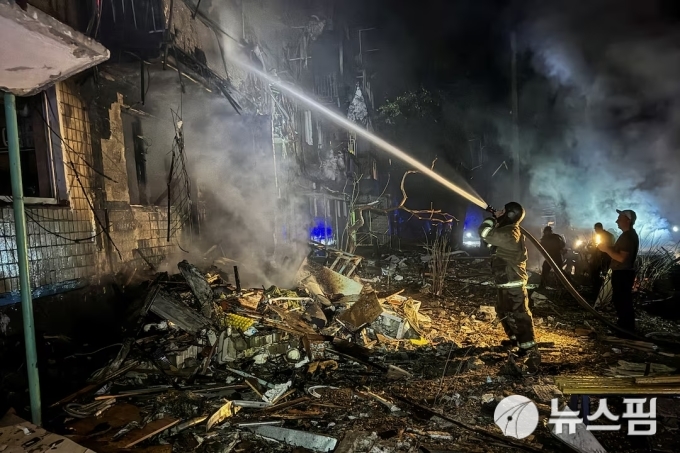
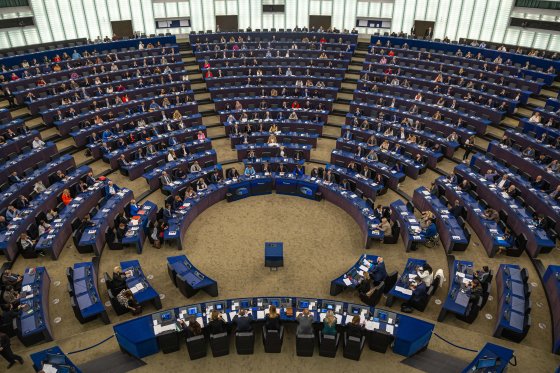
![[소설 삼별초-109]항파두리 성 공방전](https://www.breaknews.com/imgdata/breaknews_com/201205/2012051138399215.jpg)